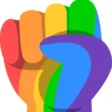In a world where sexual orientation and gender identity are more fluid than ever, many individuals seek tools to understand their true selves. That’s where an LGBTQ test comes in—a self-assessment tool that invites users to explore their identity in a guided, reflective format. From fun quizzes to introspective prompts, these tools are helping people learn more about their inner truth.
But LGBTQ identity doesn’t exist in isolation. It’s deeply connected to overall wellness—emotional, mental, and social. For a holistic perspective, it’s valuable to look at how identity exploration connects with topics like LGBTQ wellness and community thriving, which goes far beyond just a test result.

🌈 Why Take an LGBTQ Test?
The reasons for taking an LGBTQ quiz can vary widely, especially in the early stages of questioning or exploring.
- To discover potential sexual attractions or gender leanings
- As a conversation starter in therapy or support groups
- For affirmation and validation of long-held feelings
- As a fun, curiosity-driven activity—especially among teens and Gen Z
But questioning your identity can come with emotional challenges too. Having support from community spaces—like LGBTQ churches or affirming circles—is key. In fact, the way we talk about identity in public life has evolved significantly, as explored in this discussion on LGBTQ identity in spiritual communities.
📊 Types of LGBTQ Tests and How They Work
There are multiple kinds of tests, from psychology-based assessments to pop culture-inspired quizzes. Some aim to explore sexual orientation, while others help identify gender identity or position on a broader queer spectrum.
- Am I gay or bisexual quizzes
- Gender identity and dysphoria self-checks
- Kinsey Scale or Klein Grid
- Buzzfeed-style personality LGBTQ quizzes
These tests often use:
- Likert scale questions
- Situational analysis
- Comparisons of past, present, and ideal experiences
While they’re not clinical tools, they’re great starting points for reflection.

🧠 Next Steps After Taking a Test
Taking a test is just a beginning. Whether you feel confirmed in your identity or more confused, it’s important to remember:
- Labels are tools—not cages
- Your feelings may evolve over time
- Talk with trusted allies, counselors, or support networks
Need a supportive place to discuss your results and what they might mean for dating, relationships, or social life? Consider diving into this guide to LGBTQ dating apps and safe connection tips for the next phase of exploration.

